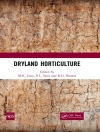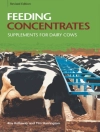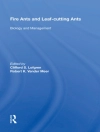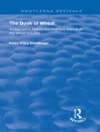Currently, the major challenge of humanity is focused on population growth through agricultural production in order to meet the demand for food. The food crunch is mainly due to pest and disease. Traditional methods, synthetic insecticides and microbicides cause health hazards to human beings, domestic animals and also affect our immediate environments. Serious concerns were implemented by both developing and developed countries as Integrated Pest Management (IPM) and Bio-intensive Integrated Pest Management (BIPM) systems where biopesticides play an important role worldwide. The available books are limited to particular aspects of biopesticides. Hence, it is imperative to bring out a holistic documentation which will provide the reader information on all aspects of biopesticides. The book consists of five sections namely microbials, botanicals, natural enemies semio- chemicals and biotechnology and equipments, bioinformatics tools and IPM. In Section I, microbial deals with utilization of Bacillus in control of phytonematodes; biological control of pest and diseases with fluorescent pseudomonads, entomopathogenic fungus and entomopathogenic nematodes in pest management, microbial viral insecticides and microbial elicitors to induce immunity for plant disease control in chilli and tomato. Importance of plant essential oils, botanicals in endocrine disruption, relevance of botanicals and use of plant volatile on pest management has been discussed in Section II. Importance and role of reduviidae, weaver ants, ground beetles, Odonatas, spiders in biological control has been discussed in Section III. In addition, genetic improvement of biocontrol agents for sustainable pest management has also been highlighted. In Section IV, classical practices and pheromone, kairomonal enhancement to natural enemies and use of transgenic plants in insect control are highlighted. Equipment and their application methodologies for application of biopesticides; relevance ofbioinformatics in biopesticides management; pest management of soybean, bio fouling and eco friendly antifoulants have been highlighted in Section V. Each chapter has objectives and conclusion along with recommendations.
Tabela de Conteúdo
Section I- Microbials.- Chapter 1. Bacillus and Biopesticides in control of Phytonematodes .- Chapter 2. Biological Control of Pest and Diseases using Fluorescent Pseudomonads.- Chapter 3. Role of Entomopathogenic Fungus in Pest Management.- Chapter 4. Microbial Viral Insecticides.- Chapter 5. Entomopathogenic Nematodes as Applied Biopesticides.- Chapter 6. Microbial Elicitors to Induce Immunity for Plant Disease Control in Chilli and Tomato.- Section II – Botanicals.- Chapter 7. Plant Essential Oils and Pest Management.-Chapter 8. Relevance of Botanicals for the Management of Forest Insect Pests of India.- Chapter 9. Use of Plant Volatile for Plant Pathogens and Pests Management.- Section – III – Natural Enemies.- Chapter 10. Reduviidae and their merits in Biological Control.- Chapter 11. Weaver ants and Biocontrol of the Nuisance Pest, Luprops Tristis (Coleoptera; Tenebrionidae).-Chapter 12. Ground Beetles (Coleoptera: Carabidae) their Potential as Bioagents in Agroecosystems.- Chapter 13. Ecofriendly control of three common Mosquito Larvae Species by Odonata Nymphs.- Chapter 14. Spider as Potential Ecofriendly Predators Against Pests.- Chapter 15. Genetic Improvement of Biocontrol Agents for Sustainable Pest Management.- Section IV – Semio-chemicals and Biotechnology.- Chapter 16. Kairomones for increasing the Biological Control Efficiency of Insect Natural Enemies.- Chapter 17. Classical Practices and Pheromone in Biopesticides.- Chapter 18. The use of Transgenic Plants in Insect Control.- Section V- Equipments, Bioinformatics Tools and IPM.- Chapter 19. Equipment for Application of Biopesticides.- Chapter 20. Relevance of Bioinformatics in Biopesticides Management: a Comparative Review.- Chapter 21. Pest Management of Soybean: Sustainable Production Techniques.
Sobre o autor
Dr. K. Sahayaraj is Associate Professor and Director of Crop Protection Research Centre at St. Xavier’s College affiliated to Manonmaniam Sundaranar University, Tamil Nadu, India. He has been awarded University Fifth Rank in M.Sc. by Madurai Kamaraj University in 1987. He has been teaching Zoology including Entomology to undergraduate and post-graduate students for more than 21 years. Dr. Sahayaraj has published four books and one proceeding on Ecofriendly Insect Pest Management. He has more than 173 publications, including original research papers, book chapters and popular articles in insect ecology, behavior, biology and physiology, as well as numerous papers on biological control efficacy of reduviidae, botanicals and fungal pathogens. Over the past 25 years, Dr. Sahayaraj’s research efforts have been dedicated to multidisciplinary, integrated approaches in understanding how reduviidae distribute and diversify in various ecosystems, and how their adaptive characters can be applied to pest management, especially through biointensive pest management. He has operated 10 research projects funded by national (DST, DBT, CSIR, MOEs) and international (IFS) funding agencies, and now he has been operating MEFs funded project. Recently, he has been publishing an international journal, namely Journal of Biopesticides (ISSN 0976-0341X).












